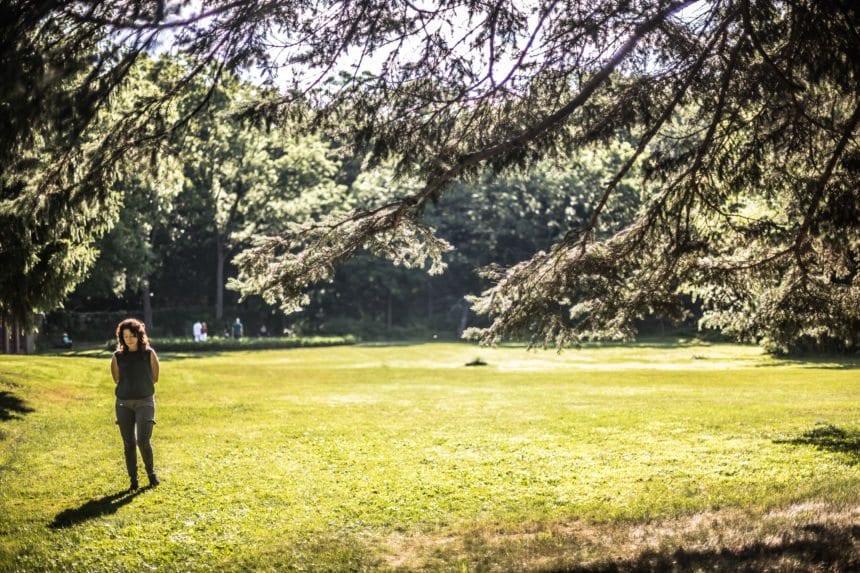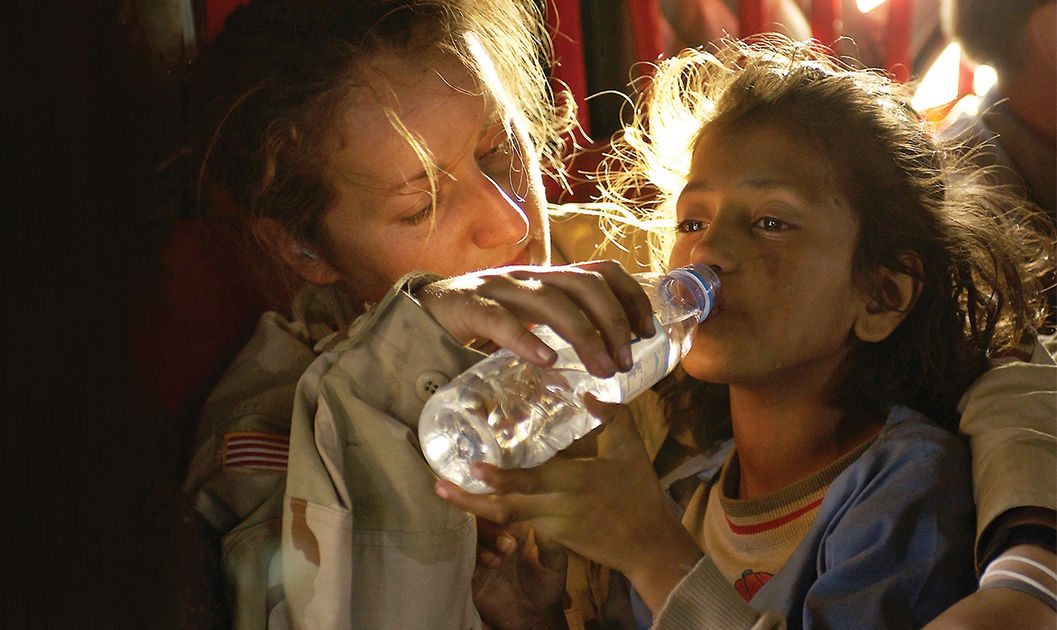Healing Ourselves, Healing the World
To build a better world, we must bring together inner practices of awareness and transformation and outer engagement with the suffering of the world.
By Hugh ByrneWhen the truth of what had happened on Election Day 2016 sank in, our meditation community—like many churches, temples, and centers of worship and healing—organized spaces and gatherings to help people open to and share what they were feeling and be supported in community.
We began with a guided meditation. Participants were invited to step out of the mental narratives of “What if?” and “What do we do now?” and open fully to whatever feelings, emotions, thoughts, and reactions were present. Participants were then invited to share the predominant emotion or feeling that was present with them. A sample of responses—in an area that voted 91% for the losing presidential candidate—included heartbreak, disappointment, sadness, fear, grief, rage, calm, terror, despair, numbness, shock, anger, hope, confusion, anxiety, and more.
For many, the willingness to open to the pain, grief, and disappointment they were feeling began a process of healing and discerning how to move forward in the difficult time ahead. Being in a shared space and process with others helped those attending realize that they were not alone and were held and supported in a wide community of those concerned for our collective future.
In the six months leading up to the 2016 election, our Insight Meditation community had organized a series of monthly “mindful politics” meetings where we explored how cultivating the contemplative practices of mindfulness, compassion, lovingkindness, equanimity—as well as wise speech, and other practices—could help us engage more skillfully with the challenges of the electoral season. Participants in these meetings shared how the invitation to open to all they were feeling—and doing this in community—helped them weather a painful period. And as the new administration took office and launched a series of actions that threatened vulnerable individuals and communities, and called into question cherished rights and freedoms, many expressed an interest in continuing a process of engaged practice—bringing together their inner and the outer experiences.
The outgrowth of this ongoing engagement in the Washington, DC area is our new Year of Engaged Dharma program that launches in April. We begin in a spirit of inquiry, exploring how we can serve and what we can learn for ourselves and others that can help us live and work together with greater kindness, peace, and understanding.
We begin with a number of premises that rest on the foundations of 2,500 years of Buddhist teachings and practice as well as the powerful example of current leaders like HH the Dalai Lama, Ven. Thich Nhat Hanh, Joanna Macy, and others, who have demonstrated the power of compassionate engagement. These premises include:
The teachings and practices of the Buddha and other traditions of awakening can help us heal our own hearts and minds and bring kindness and healing to our world.
Some of the ways these skills support us are in:
- Countering the tendency to get caught up in reactivity—fearing what might happen or being angry about what is happening, or shutting down because it’s too painful—by coming back again and again out of our narratives into this present moment.
- Developing the courage and resilience to experience difficult emotions and mind states—such as anger, fear, or grief—and learning to stay with and tolerate difficult experiences, seeing that painful and difficult emotions and mind states are impermanent. The less we cling to them or resist them, the less we suffer.
- Learning how to channel and direct the energies of difficult emotions into wise action. For example, using the fuel of anger at the deportation of vulnerable immigrants or exclusion of people based on religion, into action to resist and change policies, without allowing anger to solidify into hatred or ill-will.
- Accessing and clarifying our deepest intentions to help us focus on what matters most and building the resilience to stay engaged—and returning to what we care about most deeply when our attention or actions falter.
- Cultivating wise speech by recognizing the power of our words to cause harm and division or create harmony and connection, and developing skills of communication that allow us to express our own feelings and needs and open fully to others’ feelings and needs, particularly those who do not share our political views and alignments.
Cultivating and embodying these skills and practices can help us engage in social action in a different way. We learn to see beyond ideas of “us and them,” “good people and bad people,” “we’re right, they’re wrong,” and “winning and losing.” At the same time, we can work diligently to prevent harm, and towards recognizing that any genuine solution to social and political problems must be grounded in a deep realization of our interdependence—an understanding that we are all in this together.
Engaging in this work with others in community will provide profound support for all as we confront painful and difficult issues and increasingly visible suffering.
One of the most painful expressions of suffering in the face of others’ pain and suffering—or our own—comes from the illusion that “I’m alone, carrying the weight of all of this on my shoulders.” The illusion of separation arises from the narrowing of our attention in response to fear or other difficult emotions and the failure to see the impermanence and selflessness of the fear. When we do this we cling to a self-protective belief of “I’m all alone,” or “this is going to last forever” and we suffer. Meeting and working together in community helps us to break down the illusion of separation, reminding us of our connections with others and our shared concerns as we work together for healing.

If we are to create lasting and meaningful change in our world that addresses the most difficult and contentious social issues—such as the deep roots of war and conflict, preventing irreversible climate change, confronting racism and other forms of discrimination, and the roots of poverty and inequality, and more—we must move beyond merely changing structures and institutions. We have to bring together our inner and outer lives.
Intuitively we know that if we are to help build what Charles Eisenstein calls “the more beautiful world that our hearts know is possible,” we must bring together inner practices of awareness and transformation with outer engagement with the suffering of the world. One without the other is not enough. An exclusive focus on inner transformation leaves us separate from the world and its suffering, in which case the world benefits insufficiently from the gifts and courage we might bring. If our focus is only on changes in institutions, structures, and political processes, durable change will not be possible because the underlying roots of war, exploitation, racism, and so on—such as fear, greed, and the illusion of a separate self—are best addressed through inner practices.
Over the coming year, the 30 participants in the Year of Engaged Dharma program will identify an area where they wish to engage—for some it might be their work in a congressional office or non-profit group working on the environment or human rights; for others a grassroots campaign around gun safety legislation, or a desire to be able to engage in difficult conversations with a family member with different views and beliefs. Together, we have an opportunity to bring our hearts and minds into engagement with our world and all beings, remembering the words of the late poet and singer Leonard Cohen, “Through bitter searching of the heart, we rise to play a greater part.”
Hugh Byrne is a guiding teacher with the Insight Meditation Community of Washington and author of The Here-and-Now Habit. He has worked extensively in the field of human rights and social justice and is the lead meditation teacher in the Garrison Institute’s Contemplative-Based Resilience (CBR) program, which he will be speaking about at the upcoming Mindful Life Conference April 20-23 in the Washington DC area.
